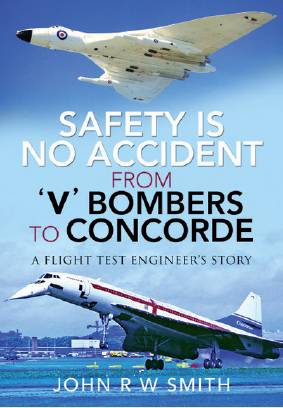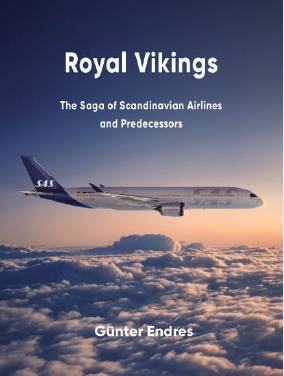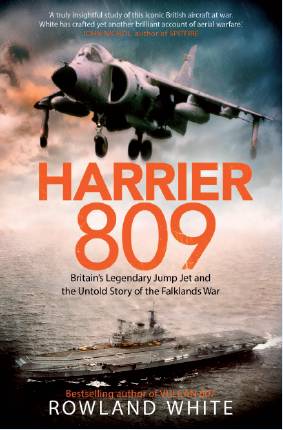Library Additions
Library Additions
In his own words: The autobiography of Sir George Dowty by G H Dowty, Hobnob Press, 2000, 160pp.
Sir George Dowty, founder of the Dowty Group, was a noted inventor and businessman, who pioneered many components used in the aviation industry before, during, and after WW2.
Sir George’s typescript autobiography, dictated shortly before his death, was later rediscovered by his son and published. It offers a unique insight into the development of Dowty’s companies and the part he played in the interwar and post-war aircraft industry.
 Safety is no accident: From ‘V’ bombers to Concorde, a flight test engineer’s story by John R W Smith, Air World, 2020, 278pp.
Safety is no accident: From ‘V’ bombers to Concorde, a flight test engineer’s story by John R W Smith, Air World, 2020, 278pp.
A biography from a career flight test engineer for both Avro in the 1960s and early 1970s and the Civil Aviation Authority certification process in the 1970s and early 1980s. Includes accounts of working on the Avro 748, Shackleton, Nimrod and Handley Page Victor tanker. He also worked on a wide range of passenger aircraft, including Concorde, Lockheed TriStar and DC-10, together with light aircraft from Cessna, Piper, Rockwell and Embraer. There are also accounts of working with test pilots, such as D P Davies, John Carrodus and Nick Warner.
High flight: The life and poetry of Pilot Officer John Gillespie Magee by Roger Cole, Flight High Ltd, 2013, 175pp.
A half-biography, halfpoetry anthology, centring on WW2 Royal Canadian Air Force pilot, Roger Cole.
The flying mathematicians of World War I by Tony Royle, McGill-Queen’s University Press, 2020, 269pp.
An exploration of the work of the engineers and scientists of the UK who developed aeronautics in the early years of the 20th century. Centred on those who worked at the Royal Aircraft Factory/ Royal Aircraft Establishment, it included the work of Edward Busk, Geoffrey Taylor, David Keith Lucas, Frederick Lindemann and William Farren, together with lesser known figures, such as David Pinsent and Roderick Hill.
Report on a visit to Cardross to identify the first Pilcher flying sites by Eric Littledike, 2005, 20pp.
A report on an investigation into the sites where Percy Pilcher lived and experimented with his gliders.
CargoLifter: A new dimension in transportation by CargoLifter, September 1998, 38pp.
A marketing brochure for the cargo-lifting airship.
Hawker’s Secret Cold War Airfield: Dunsfold, home of the Hunter & Harrier by Christopher Budgen, Air World, 2020, 303pp.
Taken over by Hawker in 1951 to test jet aircraft that were no longer able to be tested at Langley, Dunsfold became the test ground for the Hunter, Harrier, Hawk, Sea Fury and other aircraft, including the Canadair Sabre. This book explores the rise and fall of the airfield and the aircraft that were tested in that part of Surrey. It includes a breakdown of movement at the airfield for the Supermarine Attacker, Canadair Sabre and Sea Fury.
Assured destruction: Building the ballistic missile culture of the US Air Force by David W Bath, Naval Institute Press, 2020, 238pp.
In the mid-1950s plans were being developed to introduce the nuclear intercontinental ballistic missile into the USAF. These plans were rapidly altered after the Cuban Missile Crisis. This book examines the development of the bomb, the plan to introduce the missile into USAF service and its swift demise, together with the detrimental effect that the process had on the USAF and the wider missile community
 Royal Vikings: The Saga of Scandinavian Airlines and Predecessors by Günter Endres, European Airlines, 261pp.
Royal Vikings: The Saga of Scandinavian Airlines and Predecessors by Günter Endres, European Airlines, 261pp.
A very nicely illustrated history of the firms that came together to become Scandinavian Airline System (SAS), including Det Danske Luftfartselskab A/S (DDL), Det Norske Luftfartselskap A/S (DNL) and AB Aerotransport (ABA). The book also looks at the role played by those airlines during WW2.
Britannia Airways: The story of the United Kingdom’s largest holiday airline by G M Simons, Air World, 2020, 288pp.
A nicely illustrated history of the airline, which started as Euravia in 1961 and was later to become the world’s largest charter airline, taking Thomson Group’s customers and others to the Mediterranean and further afield.
RAF WWII operational and flying accident casualty files in the National Archives: Exploring their contents by Mary Hudson, Air World, 2020, 302pp.
Packed with examples, this is an in-depth guide to the information to be found in the key accident series of reports housed at the National Archives.
Bomber Command’s war against Germany: planning the RAF’s bombing offensive in WWII and its contribution to the allied victory by Noble Frankland, Air World, 2020, 228pp.
Taken from an official history of the Command found in National Archives ref AIR 41/57 and accompanied by a selection of other letters, this is the internal RAF analysis of the different phases of the air war and what lessons could be learnt from those campaigns.
Poles in the Battle of Britain: A photographic album of the Polish ‘few’ by P Sikora, Air World, 2020, 250pp.
A photographic record of the Polish Air Force who flew alongside the RAF pilots during WW2.
The territorial air force: The RAF’s voluntary squadrons, 1926-1957 by Louise Wilkinson, Air World, 2020, 319pp.
A history of the three territorial parts of the UK’s reserve in the period: Auxiliary Air Force, the Special Reserve and the Royal Air Force Volunteer Reserve. It explores the creation and reforms that were undertaken during the period, service during WW2, as well as an examination of the men and women who joined the service. The book also includes an abridged list of those who served in the force, together with some biographical details.
 Harrier 809: Britain’s legendary jump jet and the untold story of the Falklands War by Rowland White, Bantam Press, 2020, 481pp.
Harrier 809: Britain’s legendary jump jet and the untold story of the Falklands War by Rowland White, Bantam Press, 2020, 481pp.
An account of the development of the aircraft that became the Hawker Harrier and Sea Harrier. The book then goes on to explore the key part that the aircraft and those who operated it played during the Falklands Conflict.
Space Architecture: the New Frontier for Design Research, edited by N Leach, 2014, 134pp.
An architect’s view of cutting edge for outer space. Includes articles on NASA’s Astrotecture project and the design of space stations, Earth-based space centres and Moon bases.
Wally Funk’s race for space: The extraordinary story of a female aviation pioneer by Sue Nelson, Westbourne Press, 2019, 258pp.
The story of the youngest female pilot in NASA’s 1960s Women in Space programme, the cancellation of the programme and, approaching her 80th birthday, Wally’s renewed quest to get into space.
Supermarine Southampton: The flying boat that made R J Mitchell by Jo Hillman and C Higgs, Air World, 2020, 229pp.
A nicely illustrated photographic record of the interwar flying boat. The volume also includes a production list.
Boeing B-17: The fifteen ton flying fortress by G M Simons and Harry Friedman, Air World, 2011, 256pp.
A history of the origins, development and variants of the heavy bomber used by the USAAF and RAF during WW2.
Boeing 737: The world’s most controversial commercial jetliner by G M Simons, Air World, 2020, 288pp.
After looking at the original concept and the different series of aircraft, -100, -200, -300, -400/800,-500/600 and -900, the book then investigates the accidents surround the ‘rudder mysteries’ in the 1990s and the grounding of the 737 MAX, before asking whether the company can survive.